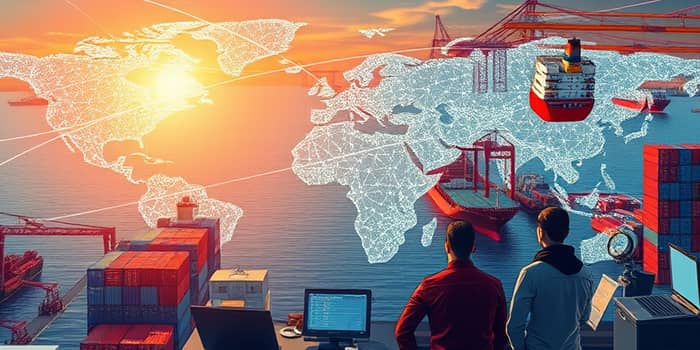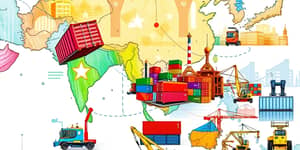
Amid ongoing geopolitical shifts and technological leaps, global supply chains are demonstrating remarkable signs of stabilization in early 2025. Companies worldwide are transitioning from reactive buffer strategies to proactive, tech-driven approaches that emphasize visibility, resilience, and strategic diversification.
Over the past two years, businesses have systematically reduced excess inventories and fine-tuned sourcing networks in response to pandemic-era disruptions. The percentage of firms relying on large safety stocks has fallen from 59% to 34%, while nearly half now plan to maintain inventories at stable levels and almost as many aim to return to or below pre-pandemic benchmarks.
Simultaneously, improvements in supplier monitoring have been significant. Leaders report comprehensive visibility of tier-one suppliers reaching 60%, up for a second consecutive year. This deeper insight allows for earlier detection of potential delays and more agile adjustments to changing conditions.
Organizations are embracing diversification strategies to avoid single-source dependencies. This shift aligns with broader goals of enhancing flexibility and reducing exposure to regional shocks. Executives are embedding resilience into corporate strategy rather than viewing it as a peripheral cost.
These measures reflect a deliberate move from simply stacking inventory toward embedding risk management within everyday operations. Companies that once hoarded stock now coordinate closely with partners to balance cost, speed, and security.
Technology adoption has accelerated dramatically, with half of all supply chain organizations planning massive investment in AI and automation by the end of 2024. Robotics integration is growing at a 14% annual clip, and advanced software platforms are enabling unprecedented levels of real-time coordination and forecasting.
By leveraging simulation engines and machine learning, firms can run virtual stress tests on their networks, identifying vulnerabilities before they become critical. These tools enable scenario-based planning and rapid response, ensuring that disruptions can be contained.
Despite stabilization gains, risk factors remain and evolve. Geopolitical tensions and economic volatility continue to threaten smooth operations. In 2024, 76% of European shippers experienced disruptions, and many economists forecast weaker conditions through 2025.
Less than 8% of firms feel they have full control over supply chain risks, and over 60% report losses exceeding expectations due to unpredictable events. Leaders recognize that digital tools must be paired with capable teams to translate data into decisive action.
The global supply chain market is on track to expand at an 11.2% CAGR through 2027, underpinned by continued demand for efficiency and connectivity. Meanwhile, U.S. business logistics costs reached $2.3 trillion, underscoring pressure to optimize every link in the chain.
These figures illustrate that while growth opportunities abound, cost pressures demand smarter, tech-enabled strategies. Companies that harness data effectively will capture the lion’s share of emerging efficiencies.
Transformational change in supply chains hinges on leadership commitment and organizational culture. Boards and C-suite executives are amplifying focus on resilience, embedding risk metrics into performance dashboards and encouraging cross-functional collaboration and executive oversight.
Developing talent with both digital prowess and supply chain expertise is a priority. With 90% of leaders acknowledging skill gaps, firms are investing in training programs and partnerships with academic institutions to build a pipeline of capable professionals.
Emphasizing transparency and accountability, companies are forging stronger ties with suppliers, customers, and regulatory bodies. This ecosystem approach ensures that resilience is a shared objective, reinforced by clear governance structures.
The stabilization of global supply chains in 2025 represents a major milestone after years of upheaval. By dialing back excess inventories, expanding supplier visibility, and embracing cutting-edge technologies, companies are crafting networks that are both efficient and resilient.
Yet complexity remains. Geopolitical risks, cybersecurity threats, and talent shortages demand ongoing vigilance. Leaders must maintain momentum, continually refining strategies and technologies to stay ahead of emerging disruptions.
Ultimately, the future of supply chain resilience lies in combining innovative tools with agile organizations and visionary leadership. Those who succeed will not only weather the next crisis but also gain a competitive edge in the rapidly evolving global marketplace.
References













